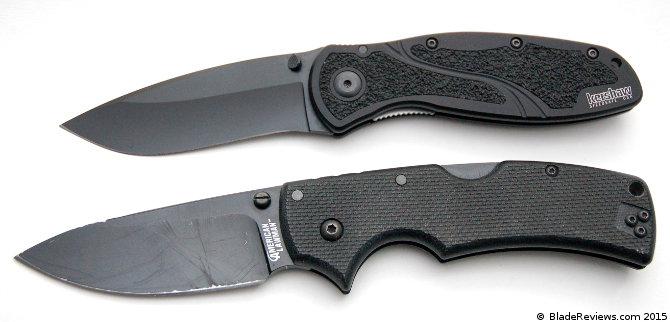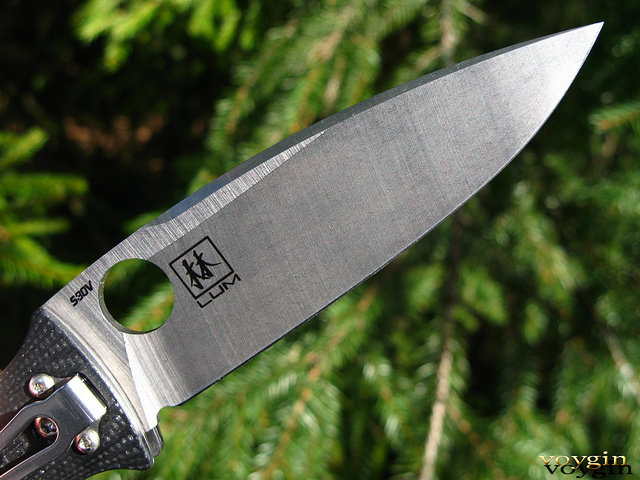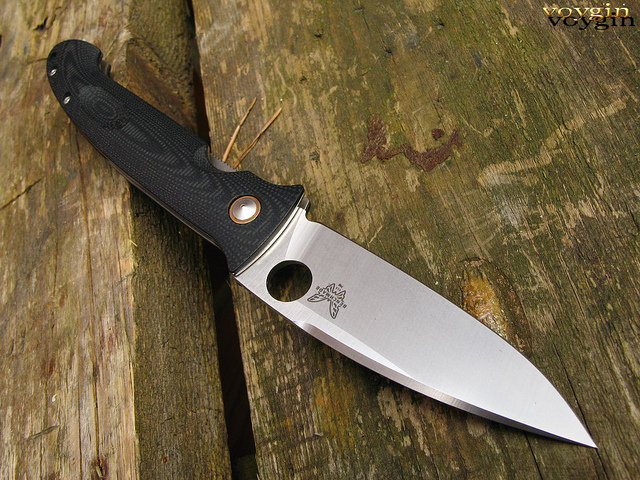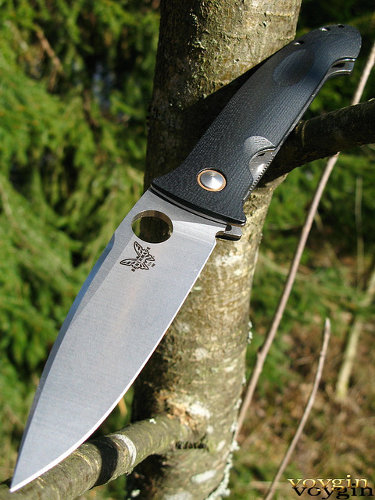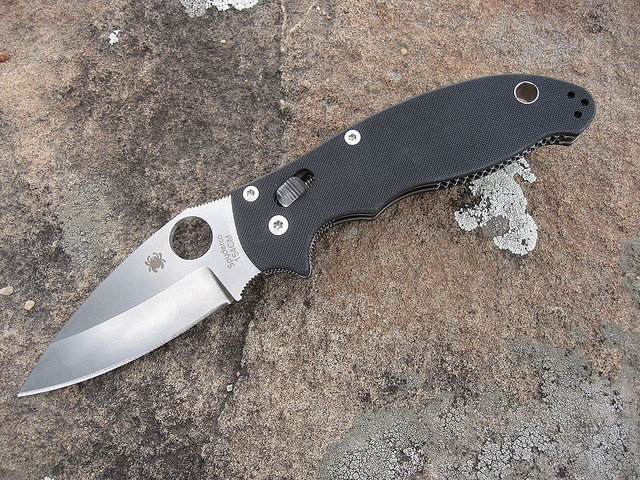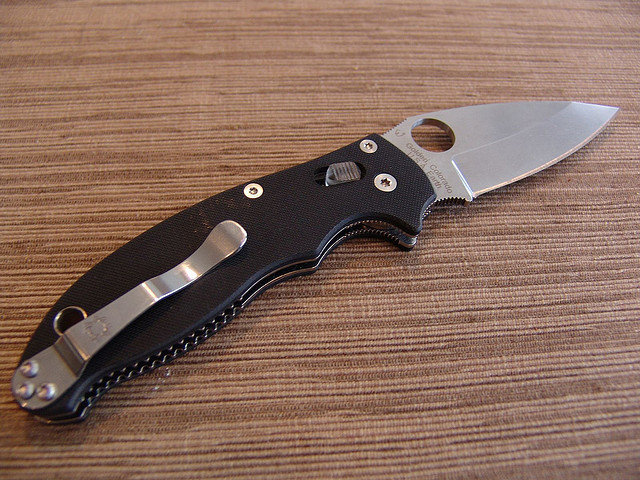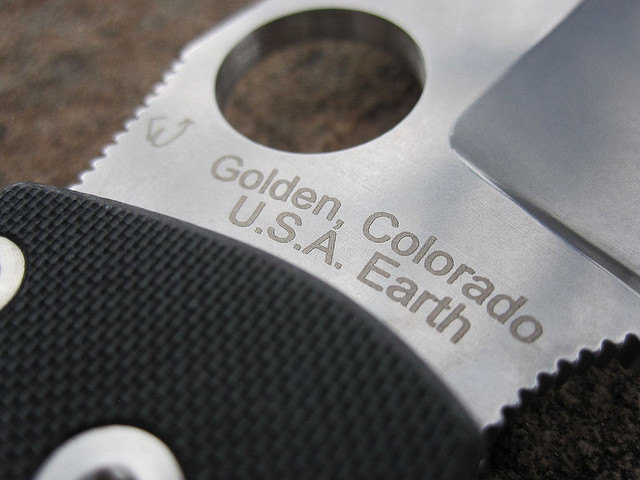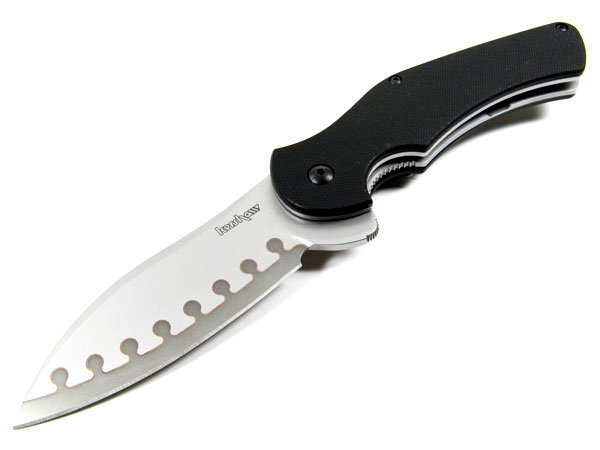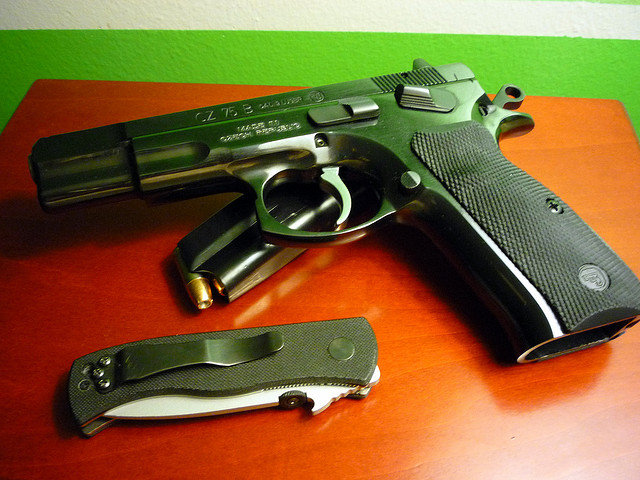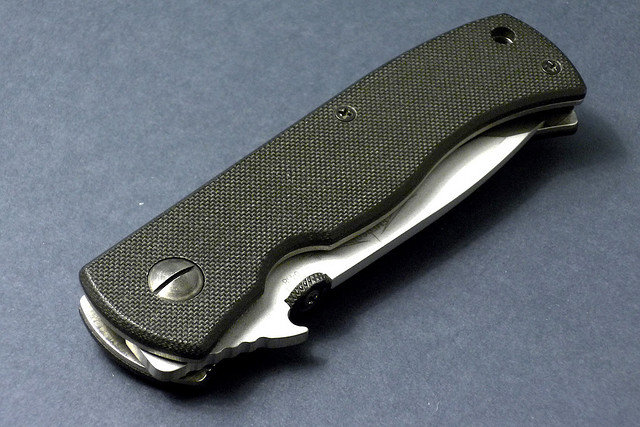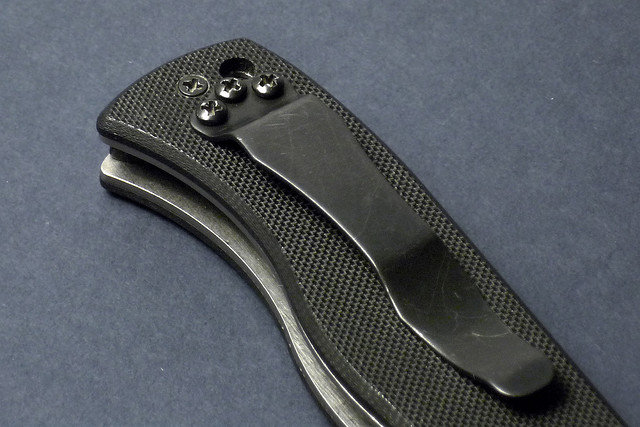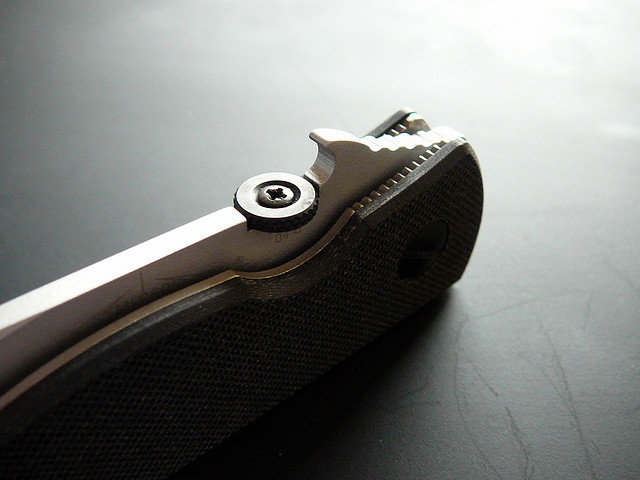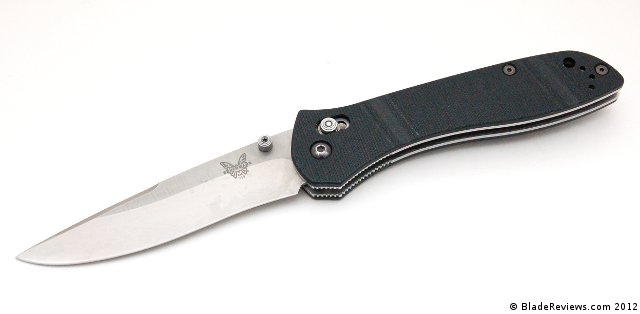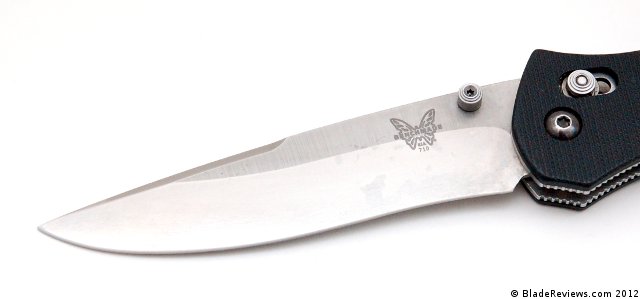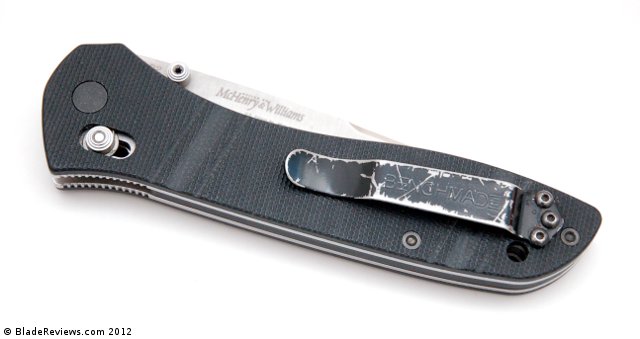Last Updated: February 20, 2019
While I enjoy reviewing all kinds of knives, it’s the mid size edc “working man’s” knives that I especially enjoy reviewing because these mid size EDC’s are what spend the most time in my pockets and in my hands. The Kershaw Blur is such a quintessential mid size EDC knife that a full review is long overdo.
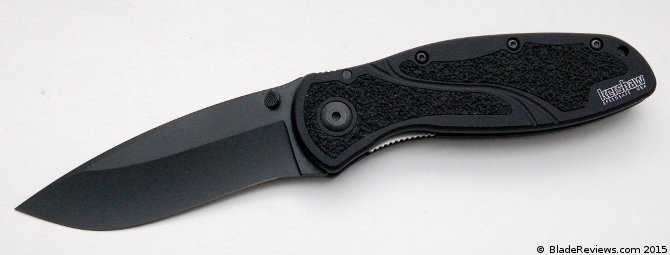
Buy the Kershaw Blur at BladeHQ
Also, I can’t ignore the fact that this another Ken Onion design. Ken Onion is the man behind a lot of the knives I have reviewed (such as the CRKT Ripple), and his designs are very famous for their flowing shapes. In contrast some of his other work, the Blur looks fairly pedestrian, but it is a good size knife with a very functional design which is part of the reason why I think the Blur has become so popular.
General Dimensions and Blade Details
The Blur has an overall length of 7.875″, a 3.375″ blade, weighs 3.9 ounces, and is made in the USA. It’s a medium to large size folding knife. I would classify this as a larger EDC knife or a tactical knife.
The Blur comes in many flavors and there is a little something for everyone with different colors, blade steels, handle inserts, and blade shapes. The “standard” Blur comes with a nice hollow ground drop point blade, but you also have the option of a tanto blade and there is even a blunt tip version for EMT and rescue applications. You also have the option of plain edge or partially serrated. Kershaw also sells this knife with a black DLC (Diamond Like Coating) on the blade – it’s an attractive option and wears really well.
In addition to that high hollow grind, there is also a slight recurve on the edge (which is more pronounced with the rescue version). The recurve is slight, which keeps this knife reasonably easy to sharpen. There is a swedge running along the top which keeps the tip of the drop point version strong.
In practice the Blur is a formidable slicer. The slight recurve and hollow grind make the knife excellent for cardboard. The tip provides a good combination of strength and piercing ability. This is designed to be a work knife, and I don’t hesitate to use it in that capacity.
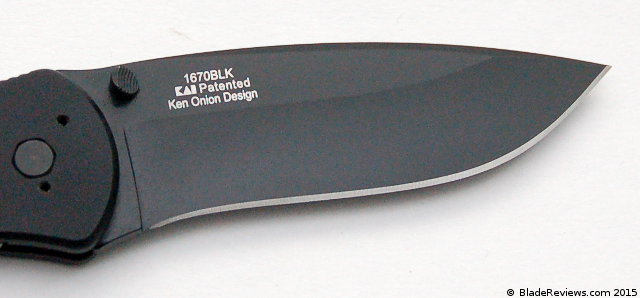
As for blade steel, the base model comes with a fairly unassuming Sandvik 14NC28 steel blade (shown here). This is a good mid range steel, ideal for EDC. It takes an edge easily and holds it well. I have had no issues with rust – especially with the DLC coating. I would put 14NC28 above AUS-8 but below 154CM.
Kershaw also offers the Blur in S30V, CPM154CM, and a even a composite blade with Sandvik 14NC28 with a ZDP189 edge. I have also seen this knife in 440A, 420HC, and few others. The S30V version is especially popular, and a number of limited editions have been released over the years. There is a steel here for every taste (and every budget).
Handle, Ergonomics and Pocket Clip
The first thing you will notice about the handle is the sandpaper looking inserts. Kershaw calls this “Trac-Tec” and it is actually a rubberized material that provides plenty of traction without tearing up your hands. The rest of the handle is made from anodized 6061 aluminum and features a flow though (pillar construction) design. All in all this is a very strong design. The handles are very nicely finished and relatively light weight – I have no complaints.
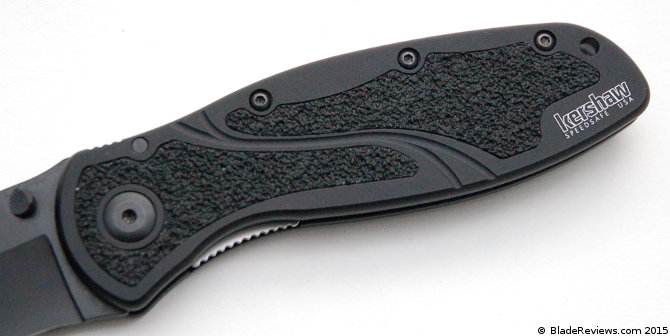
The ergonomics of the Blur are excellent. This simple handle gets out of your way and affords a comfortable grip for small and large hands alike. There is a short run of jimping on the gently sloping thumb ramp. It provides just enough traction to index your thumb and hold it in place. The rubber trac-tec inserts aren’t my favorite feature of the knife, but I must admit they provide plenty of grip. All the corners have been rounded and the knife feels natural in hand. Perfect for getting plenty of work done.
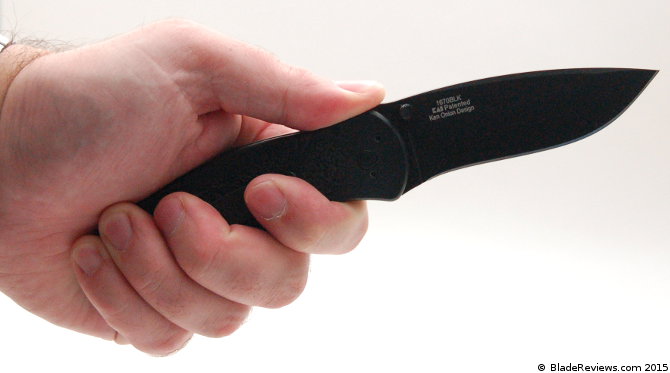
The pocket clip is fairly well executed. Depending on your particular model, it comes with a matte black finish and rides pretty low in the pocket (not “super” low, if that is something you are looking for). It does allow for tip up or tip down carry, but it is not ambidextrous. One thing I especially like is how Kershaw doesn’t include their Trac-Tec texturing where the clip touches the handle. This makes the knife much easier to remove from the pocket (although I do find it sometimes hangs up a little.

Deployment and Lockup
Kershaw opted for ambidextrous thumbstuds here. The thumb studs are cut at an angle and dig into your thumb. One review I read said that the thumb studs looked like a “stair case” which is actually a pretty good description. Some people love these thumb studs, others hate them. I find that they work alright for my purposes. I think that these thumb studs work best with an assisted opener, but I think they are a little fiddly and not my favorite.
Being an early Ken Onion / Kershaw collaboration, this knife comes with Ken’s Speedsafe assisted opening system pre-installed. I am not the biggest fan of assisted opening knives, but the Speedsafe on the Blur is robust and the action is good. Of course, you can always take the spring out and reduce the Blur to a 100% manually opening blade if that is what you prefer. There is a small detent so the blade won’t fall out of the handle if you take away the assisted opening spring.
The Blur features a liner lock. I think the lock works well here, especially in the EDC and backup tactical roles. The liner engages early and the lock-up is strong with zero movement. The whole deployment and lockup aspects of this knife is a real plus in my book because it is very smooth. Kershaw knows how to put assisted openings and liner locks together and the Blur is an outstanding example of that knowledge.
Blade centering on my knife is pretty much perfect.
Kershaw Blur Review – Final Thoughts
The Kershaw Blur is a modern classic. Offered in a myriad of different blade steels and handle colors, there is a little something for everyone. This is one of Ken Onion’s more restrained designs for Kershaw, and the clean lines of the Blur has garnered it broad appeal, and the knife continues to sell well even years after it’s release.
In fact, the knife has developed something of a cult following among enthusiasts of high end knives. This is a humble blade, but it makes for a great beater. I respect the Blur in the same way that I respect the Cold Steel American Lawman, Buck Marksman, and Hogue EX04 (these are among my favorite folders with ~3.5″ blades). This is a tough working knife and was designed to be used.
The Blur is made in the USA, is well constructed, features quality materials, and is priced reasonably – usually between $45 and $75 depending on the trim level. This everyman’s folder gets a lot of things right, and for that reason I have included it as one of the my recommended EDC knives.
- KERSHAW BLUR BLACK POCKETKNIFE: A classic Kershaw with a do-it-all blade and dark good looks, the Blur is the perfect EDC for multi-tasking thanks to its big, slightly recurved blade. Made in the USA.
- DROP POINT RECURVE PLAIN EDGE BLADE: Made from high-performance Sandvik 14C28N stainless-steel that holds its edge and resharpens easily. A Cerakote blade coating adds protection and enhances performance.
- 6061-T6 ALUMINUM HANDLE: The black anodized aluminum handle is scratch and fade-resistant. Trac-Tec inserts promote a secure, comfortable grip during use. Includes reversible pocketclip for right, tip-up/down carry.
- DESIGNED WITH SAFETY IN MIND: Equipped with Kershaw’s assisted opening for easy one-handed release with thumb-stud. Inset liner lock secures blade in place for ensured user safety.
- SIZE SPECIFICATIONS: Blade Length: 3.4in. Closed Length: 4.5in. Overall Length: 7.9in. Weighing in at 3.9oz. Backed by Kershaw’s Limited Lifetime Warranty.
I recommend purchasing the Blur at Amazon or BladeHQ. Please consider that purchasing anything through any of the links on this website helps support BladeReviews.com, and keeps the site going. As always, any and all support is greatly appreciated. Thank you very much.
